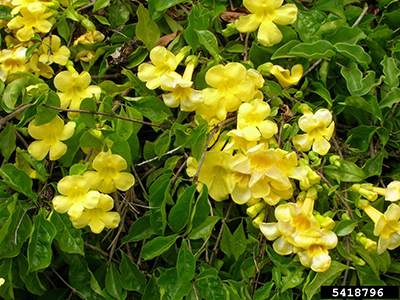Invasives Awareness
Invasive species can have a transformative impact on the environments where they are introduced. An invasive species is a non-native species that has a negative impact on the economy, environment, or humans where it is introduced. More than a third of all endangered and threatened plant and animal species are declining because of invasive species.
Sometimes, the terms we use to describe plants can become conflated and confusing. So here are a few clarifications.
Native plants are plant species that occur naturally within a geographic region or area. Non-native plants (sometimes called exotics) are species that have been introduced to a geographic region. Any plants that were present prior to the arrival of Europeans in Florida are considered native.
It is important to note that not all non-native plants are a problem. In fact, only a small percentage of non-native species become invasive at all—of the 857 plants evaluated by the UF/IFAS Assessment, 73% are okay to recommend for use by gardeners. Of the remaining plants in their database, 15% are "caution plants," meaning they should be managed to prevent escape, 7% are invasive, and 5% are prohibited. Invasive and prohibited plants should not be promoted or planted in Florida.
So why all the attention on this 12% of invasive and prohibited plants? Because when populations of non-native species encroach on natural areas, land managers are left with an expensive and difficult task. As populations expand, harm to the ecosystem and cost to control increases while the likelihood of eradication decreases.
Where can you find out if a plant is invasive? The UF/IFAS Assessment of Non-native Plants in Florida Natural Areas offers an easily searchable database of plants. You can filter the results by your area of the state (North, Central, or South) or by the conclusion type (e.g., not a problem species, invasive, prohibited).
If a plant is labeled invasive, it means that this plant sustains itself outside of cultivation and is expanding its range in Florida's natural areas and is not recommended for use in the state. It is illegal to transport or plant species included in Florida's prohibited and noxious weed lists. Plants that are labeled prohibited on the IFAS Assessment are prohibited from use in the state according to the Florida Department of Agriculture and Consumer Services Noxious Weed List or the Prohibited Aquatic and Wetland Plants List.
Information for Master Gardener Volunteers
Dr. Deah Lieurance, coordinator for the UF/IFAS Assessment, wants Master Gardener Volunteers to know this: "The IFAS Assessment is a service to the community. We are here to provide science-based recommendations for the use of non-native species in the state. Our ultimate goal is to reduce invasions of non-native plants to help protect natural and agricultural areas in Florida and the Southeast through prevention and responsible use of non-native species."
Master Gardener Volunteers (MGVs) may find themselves confused about the different invasive species lists, what their purposes are, and which ones they as MGVs should be using. Dr. Lieurance provides a bit of information about these regulatory and non-regulatory lists and how they are related to the IFAS Assessment.
The Florida Department of Agriculture and Consumer Services is responsible for the compilation and enforcement of two lists of regulated plants. One list covers aquatic plants, the Prohibited Aquatic and Wetland Plants List, and the other covers terrestrial plants, the Florida Noxious Weed List. Legally speaking, there is no difference between noxious and prohibited plants.
You may also hear references to the "FLEPPC list." This is a non-regulatory list created by the Florida Invasive Species Council (FISC), formerly known as the Florida Exotic Plant Pest Council (FLEPPC). This is a non-profit organization that pioneered invasive plant awareness in the state. The FLEPPC list does not discriminate between weeds of disturbed areas and invasive species that encroach on natural areas. There is some crossover between the FLEPPC and IFAS Assessment lists. But Master Gardener Volunteers should be using the recommendations of the UF/IFAS Assessment as it is a direct product of IFAS Extension. The conclusions of the assessment should be referenced by UF faculty and staff; the list is available online at http://assessment.ifas.ufl.edu.
Additionally, all the state-listed prohibited/noxious species have been added to the IFAS Assessment database, providing Master Gardeners with a one-stop shop to access species to use in their programs.


